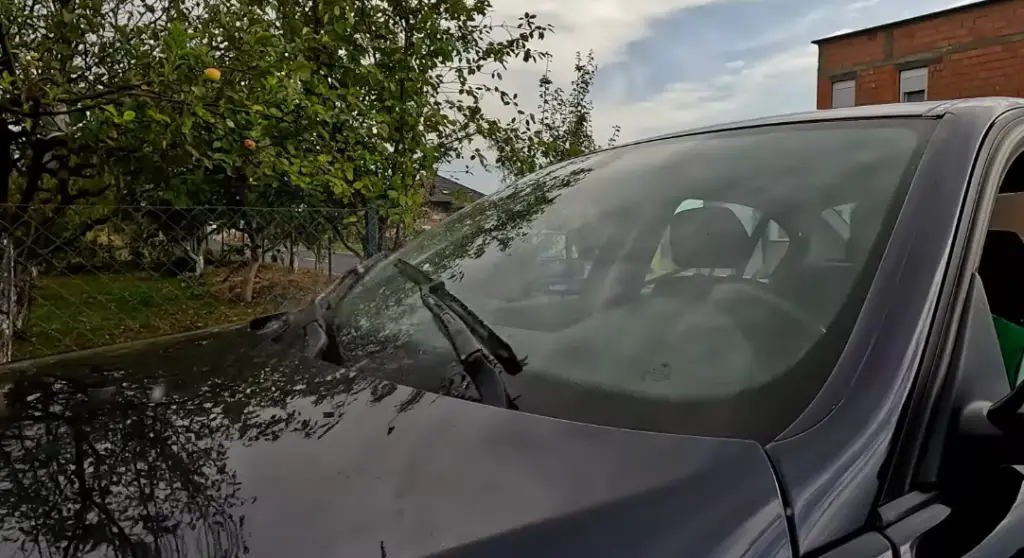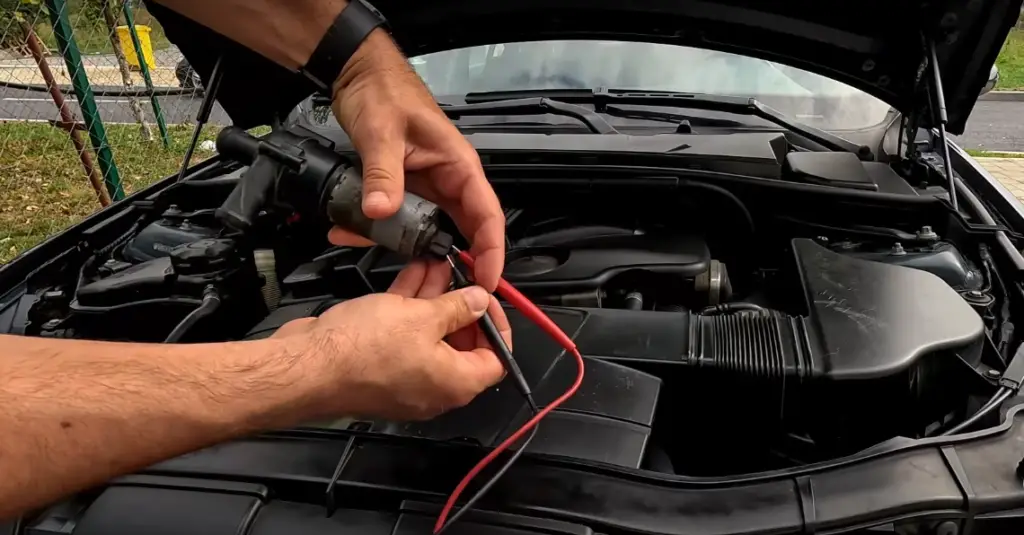If the windshield wiper fluid isn’t coming out, it could be due to several common issues such as a low or empty fluid reservoir, clogged nozzles, or a faulty washer pump. Other potential causes include frozen fluid in cold weather, disconnected hoses, or a blown fuse.
Windshield wiper fluid is essential for keeping your windshield clean and ensuring clear visibility when driving. A functional windshield washer system helps remove dirt, grime, bugs, and other debris that can obstruct your view. However, if you notice that windshield wiper fluid is not coming out, it can be both frustrating and potentially dangerous. Several factors can lead to this issue, ranging from a clogged nozzle to a faulty washer pump.
In this post, we’ll explore the common causes, troubleshooting steps, and solutions to help you get your windshield washer system working again.

Contents
Windshield Washer System
Before diving into the causes and fixes, it’s important to understand how the windshield washer system operates. The system typically consists of the following components:
- Washer Fluid Reservoir: Stores the washer fluid.
- Washer Pump: A small motor-driven pump that moves the washer fluid from the reservoir to the nozzles.
- Hoses: Tubes that carry the washer fluid from the pump to the nozzles.
- Nozzles: Small outlets on your hood or windshield that spray the fluid onto the windshield.
- Washer Switch: Located on the steering column or dashboard, this switch activates the washer system when pressed.
When you press the washer button, the pump draws fluid from the reservoir and pushes it through the hoses to the nozzles, which spray the fluid onto the windshield. Wiper blades then sweep the fluid away, cleaning your windshield.
Causes of Windshield Wiper Fluid Not Coming Out
If your windshield washer fluid isn’t spraying, the problem could be due to one or more of the following reasons:
1. Low or Empty Washer Fluid Reservoir
- Symptoms: No fluid sprays from the nozzles, and you may hear the pump running.
- Cause: This is often the simplest issue. Your washer fluid reservoir could be empty, preventing the system from dispensing any fluid.
- Solution: Check the washer fluid level and refill the reservoir if it’s low or empty. It’s important to use the correct windshield washer fluid, as water alone may freeze in colder temperatures.
2. Clogged or Blocked Nozzles
- Symptoms: You may hear the pump working, but fluid doesn’t reach the windshield or only a weak stream comes out.
- Cause: Dirt, debris, or wax buildup can clog the tiny nozzles that spray fluid onto your windshield.
- Solution: Clean the nozzles using a pin, needle, or compressed air. Insert the pin into the nozzle to dislodge any blockage, or use compressed air to blow out dirt and debris.
3. Washer Pump Failure
- Symptoms: When you activate the washer system, no fluid comes out, and you may not hear the pump running.
- Cause: A failed or faulty washer pump could prevent fluid from being delivered to the nozzles.
- Solution: Test the washer pump by listening for the sound of the motor when you press the washer button. If you don’t hear the pump running, the motor may be defective. You’ll need to replace the pump if it’s not functioning properly.
4. Frozen Washer Fluid
- Symptoms: No fluid sprays in cold weather, and you might hear the pump running.
- Cause: In cold climates, water or low-quality washer fluid may freeze in the reservoir or hoses, preventing fluid from flowing.
- Solution: Move your car to a warmer area, such as a garage, to allow the fluid to thaw. To prevent this in the future, always use washer fluid designed for cold weather, which contains antifreeze properties.
5. Broken or Disconnected Washer Hoses
- Symptoms: You activate the washer system, but fluid leaks under the car or engine bay instead of spraying from the nozzles.
- Cause: Washer fluid hoses can become cracked, damaged, or disconnected over time, causing leaks and preventing fluid from reaching the nozzles.
- Solution: Inspect the hoses for signs of wear, cracks, or disconnections. Replace damaged hoses or reconnect any that have become loose.
6. Blown Washer System Fuse
- Symptoms: The washer system doesn’t work at all, and you don’t hear the pump motor.
- Cause: Electrical systems in cars are protected by fuses, and if the fuse for the washer system blows, it will stop the pump from working.
- Solution: Check the car’s fuse box (refer to your owner’s manual for the exact location) and look for the fuse associated with the windshield washer system. If the fuse is blown, replace it with one of the same rating.
7. Faulty Washer Switch
- Symptoms: No fluid comes out, and the wipers don’t move when you press the washer button.
- Cause: A malfunctioning washer switch may not send the correct signal to the pump and wipers, causing them not to activate.
- Solution: If the switch is faulty, it may need to be replaced. This can be a more complex job, so professional assistance may be required.
8. Washer Fluid Leaks
- Symptoms: You frequently find the washer fluid reservoir empty, even after refilling it, or you notice fluid leaking under the vehicle.
- Cause: Leaks in the reservoir, hoses, or connections can cause the fluid to escape before reaching the nozzles.
- Solution: Inspect the system for leaks, including the reservoir, hoses, and pump seals. Repair or replace any damaged components to stop the leak.

How to Troubleshoot Windshield Washer Fluid Issues
When you find that your windshield washer fluid isn’t coming out, here’s a step-by-step guide to troubleshoot the issue:
- Check the Washer Fluid Level: First, open the hood and locate the washer fluid reservoir. Make sure it’s filled to the proper level. If it’s empty, refill it with the appropriate windshield washer fluid.
- Inspect for Leaks: Look for any signs of leaks under the vehicle or around the washer fluid reservoir. If you notice fluid pooling, you likely have a leak in the system.
- Listen for the Pump: When you press the washer button, listen carefully for the sound of the washer pump motor. If you hear the pump running but no fluid comes out, the issue may be a clogged nozzle or a disconnected hose. If you don’t hear the pump, it could indicate a failed pump or a blown fuse.
- Clean the Nozzles: Use a small pin or needle to clean the nozzles on the hood or windshield. This can help remove any dirt, wax, or debris that may be blocking the fluid from spraying.
- Test the Washer Pump: If the pump isn’t working, use a multimeter to check for electrical continuity. If the pump has failed, you’ll need to replace it.
- Check the Fuse: Refer to your vehicle’s fuse box diagram and find the fuse associated with the washer system. If the fuse is blown, replace it and test the system again.
- Inspect Hoses: Look for any kinks, cracks, or disconnections in the washer fluid hoses. Replace or reconnect hoses as needed to restore fluid flow.
How to Prevent Windshield Washer System Issue
To avoid problems with your windshield washer system in the future, follow these preventive maintenance tips:
- Use the Right Fluid: Always use windshield washer fluid designed for your climate. In colder areas, opt for a fluid with antifreeze properties to prevent freezing.
- Clean Nozzles Regularly: Clean the nozzles periodically to prevent blockages caused by dirt and debris.
- Check the Fluid Level: Keep an eye on your washer fluid level and refill it as needed.
- Inspect Hoses: Regularly inspect the washer fluid hoses for wear and tear, and replace them if they show signs of damage.
- Service the Pump: If your washer pump is making unusual noises or seems to struggle, it may need servicing or replacement before it fails completely.
Frequently Asked Questions
Here are some FAQs about windshield washer fluid issues –
1. Why is my windshield washer fluid not coming out but the pump is running?
This could be due to clogged nozzles or a disconnected hose. The pump is working, but the fluid may be blocked or unable to reach the nozzles.
2. Can I use water instead of windshield washer fluid?
It’s not recommended to use plain water, especially in colder climates, as it can freeze and damage the system. Always use a proper windshield washer fluid with antifreeze properties.
3. How do I know if my washer pump is bad?
If you don’t hear the pump running when you press the washer button, the pump could be faulty. You can test the pump with a multimeter or have a mechanic diagnose the issue.
4. Can a blown fuse cause windshield washer fluid not to come out?
Yes, a blown fuse can prevent the washer pump from working, which would stop fluid from being sprayed onto the windshield.
5. What should I do if my windshield washer fluid freezes?
Move your vehicle to a warmer environment to allow the fluid to thaw. To prevent future freezing, use a windshield washer fluid that is designed for cold weather conditions.
Conclusion
When windshield wiper fluid is not coming out, it’s usually a solvable issue with some basic troubleshooting. Whether it’s due to low fluid levels, clogged nozzles, or a more complex problem like a faulty pump or broken hose, addressing the issue quickly ensures your safety on the road. Regular maintenance of the washer system, including using the right fluid and cleaning the nozzles, can prevent many of these issues from occurring.